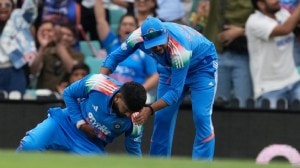The World’s Most Dangerous Place
No stereotype-shattering revelations here, but a lucid history of two countries born of the same womb yet never reconciled to it. J N Dixit ...

No stereotype-shattering revelations here, but a lucid history of two countries born of the same womb yet never reconciled to it. J N Dixit should know, because he was there for most of it, says
THERE are a couple of things that bother you about this book even before you get to the first page of the introduction. Not meaning to judge it by the cover, there is a lingering impression at the outset that the book is mostly about war. I mean a cloud of fire leaves no impression of any peacetime activity like playing kho-kho on the border.
Apart from that it worries you that the title may be plagiarised from a certain Leo Tolstoy’s book. But look carefully and you see that it says India-Pakistan on top and so it is merely Tolstoy-inspired nomenclature. Then you look below and you see what is the most unnerving sign in the book. That a wannabe policy wonk must invest nearly Rs 600 in a book on profound policy matters that is recommended by Khushwant Singh. In which Singh calls one of the most widely respected Indian foreign affairs experts ‘‘objective, clear-headed and lucid’’. Really, Singh lived through the Partition to tell a tale that has defined the era for a certain generation but it was hardly the stuff of foreign policy gobbledygook.
| India-Pakistan in War & Peace J N Dixit Books Today Rs 595 |
There’s only one element in the book cover that takes you beyond the rather dramatic entry point. That is the author’s name. J N Dixit has propounded more than anyone in recent history on Indo-Pak affairs. He retired in 1994 and since then has rarely paused to eat and sleep while almost continuously writing and speaking on the conflict that divides the subcontinent. This book is your chance to throw out all the clippings of his writings that you kept for reference. Also, in case you hang on to the various Indo-Pak agreements like the Tashkent Declaration and the Simla Agreement and the Lahore Declaration for that day when they will be have more use than just fermenting disagreement, Dixit has included them in as Annexures.
The drama ends before the start of the book. The rest is history. Dixit is not making stereotype-shattering revelations. He is elucidating what has happened between two countries born of the same womb and yet never reconciled to their separate births. He should know, he was there for the most part of it.
The subcontinent went to war within months of independence. Over the following half-century, they’ve fought three more wars, clashed at the UN and in every other global forum. Today, a nuclearised South Asia is seen as among the world’s most dangerous places. Dixit does nothing to allay those fears: ‘‘Pakistan’s inclination to be trigger-happy in nuclear terms seems plausible, given the fact that the final authority of command and control over nuclear weapons would rest with the joint staff headquarters aided by a military secretariat. Neither is responsible to any elected institutions.’’
Even before he begins the backward march into the troubled history of the region, the former foreign secretary, who also served as High Commissioner in Pakistan, warns that his assessment is merely coloured by the recent events of September 11, December 13 and January 12, not conditioned by them. There must be a difference between ‘‘quick journalism and reasoned analysis’’, he reasons. For the most part the rationale works. The book carries you through the wars, the coups in Pakistan from 1972 to 1999 and everything else with an insider’s view of history. Dixit looks at the India-Pakistan conundrum as a legacy of history that predates the Partition by almost 300 years, with its roots not just in the Muslim separatist movement of the 1930s but traced back further to the battle of succession between Dara Shukhoh and Aurangzeb.
But given the currency of the recent Indo-Pak conflict Dixit obviously finds it hard to give up without some last words on the post-9/11 unravelling matrix of Indo-Pak relations. But it doesn’t come until the end and what goes before it is an exhaustive and almost unprecedented analysis of India’s foreign policy. Singh’s actually right in his praise.



- 01
- 02
- 03
- 04
- 05




























